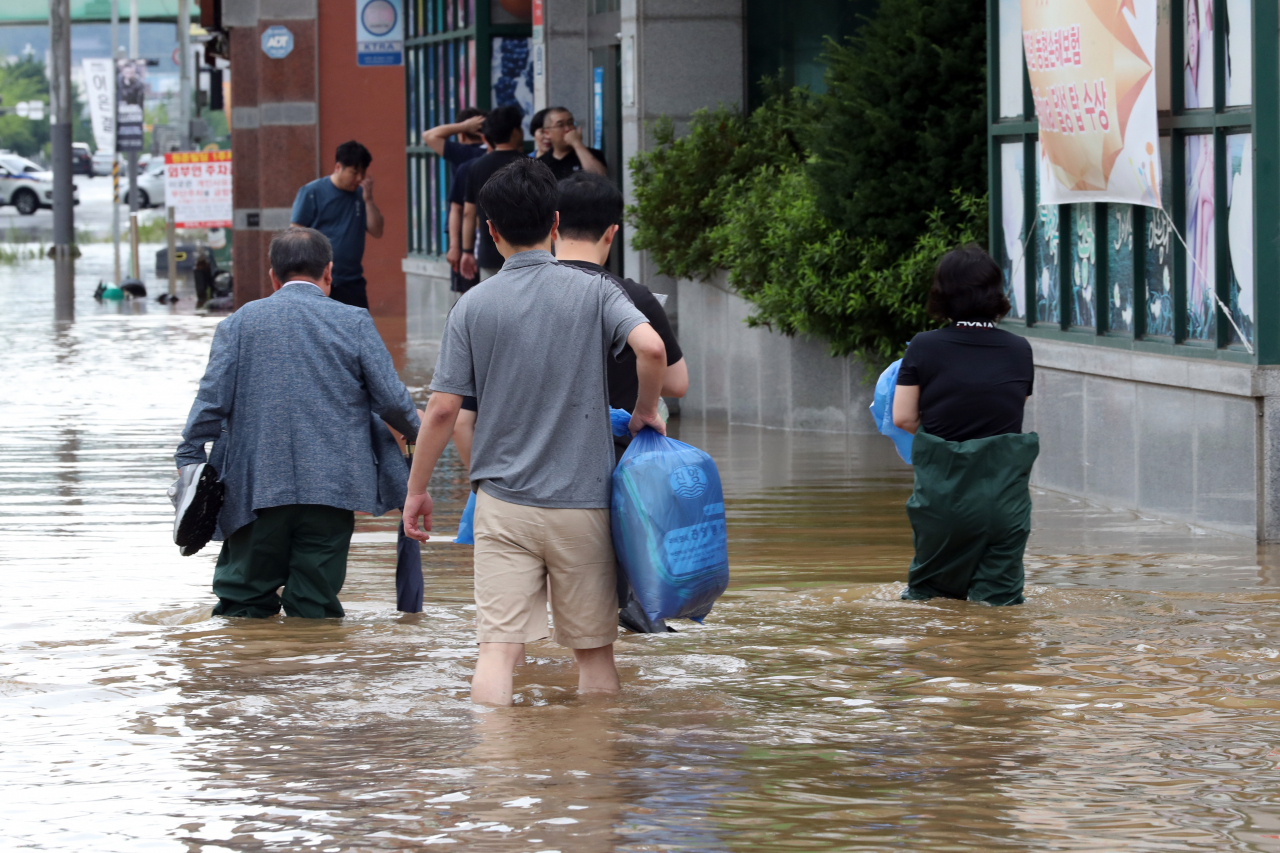Monsoon may continue until early August
Average monthly precipitation nationwide this year breaks record
By Lee Jung-younPublished : July 24, 2023 - 15:27

This year’s monsoon season, which has broken records for precipitation, is nearing its end, but it is not yet clear when the sporadic downpours will stop, the weather agency said Monday.
The Korea Meteorological Administration said heavy rain will fall in most parts of the country on Monday and Tuesday, as a stationary front moves south.
Up to 120 millimeters of rain is expected for the North and South Jeolla provinces and up to 80 mm in southern Gyeonggi Province, the North and South Gyeongsang provinces and the southern parts of the North and South Chungcheong provinces. Up to 60 mm of rain per hour is expected to be concentrated in the Gyeongsang and Jeolla provinces on Tuesday morning and in the Chungcheong provinces, Seoul, Incheon and Gyeonggi Province on Tuesday afternoon. On Wednesday, showers of 50 to 60 mm are expected nationwide.
This week’s rain, caused by a combination of cold and dry air from the north and the hot, humid air of the stationary front, is likely to fall in sudden, heavy showers, the KMA said.
The path of Typhoon Doksuri, which was moving westward from the east sea of Manila, Philippines, on Monday, will influence how much the North Pacific high will expand, and what kind of weather Korea will see from Thursday to next week.
If Typhoon Doksuri continues to move westward or moves too fast, the North Pacific high will not expand enough, causing more rain for Greater Seoul and western Gangwon Province. But if the typhoon leans north and moves slowly, the North Pacific high will be pushed to the north, and the entire country will be under the influence of the North Pacific high pressure, making way for clear sunny weather and an end to the monsoons.
"The location of the stationary front after Thursday is highly difficult to predict. There is still a possibility of monsoon rains in the central region from Thursday to Aug. 1," a KMA official said during a briefing.
Meanwhile, the national average precipitation from June 25 to Saturday reached 597.5 mm, the most ever recorded for the period dating to 1973 when systematic weather observation began. By region, the Chungcheong, Jeolla and Gyeongsang provinces saw the highest rainfall ever, recording 725.1 mm, 736.6 mm and 590 mm, respectively.




















